Celebrating National GIF Day: 37 Years of GIFs as Art and Expression
Celebrate National GIF Day! Discover the evolution of GIFs from simple files to dynamic art and a cornerstone of online culture.
1,000 words, 5 minute read
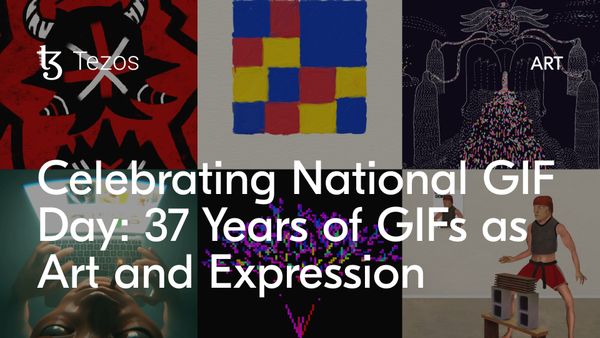
In celebration of National GIF Day, we reflect on the incredible journey of the GIF (Graphics Interchange Format). Over its 37-year history, the humble GIF has transcended its role as a simple file format, becoming prevalent as a medium of digital art and a staple of meme creativity.
From its creation in 1987 to its near-extinction and subsequent revival, the GIF’s history is a testament to the enduring power of technology, creativity, and online expression. Let’s dive into the fascinating evolution of the GIF, its challenges and triumphs, and how Tezos has become a vibrant hub for GIFs across Web3.
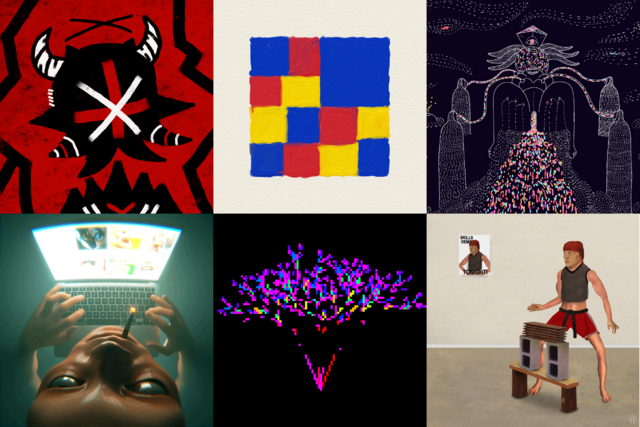
Artists featured from left to right. Top row - Lucrece, William Mapan, Cemhah. Bottom row - OZBREN, p1xelfool, Scorpion Dagger
The birth of a format #
In 1987, Steve Wilhite at CompuServe created the Graphics Interchange Format (GIF), revolutionizing how visuals were shared online. Initially used for still images, the GIF quickly became a worldwide standard for digital graphics.
In 1995, Netscape 2.0 introduced looping animated GIFs, a breakthrough for the format. This turned GIFs into a new storytelling medium, captivating viewers on websites across the emerging internet. However, shortly after, GIFs almost died.
A brush with obsolescence #
Despite their early popularity, GIFs faced a significant challenge in the late 1990s. The algorithm used for image compression in GIFs was patented, and the owning company began enforcing royalties. This led to a backlash among developers, who created alternative file formats, such as PNG, to avoid legal issues.
The movement culminated in “Burn All GIFs” day in 1999, which encouraged users to delete their GIF files. Yet, the format persisted due to its unique support for animated images, which resonated deeply with internet users and creators.
The rise of GIF art #
The GIF quickly caught the attention of artists. The “Dancing Baby” GIF, released in 1996, was an early viral sensation. This simple, looping image of a 3D-rendered baby dancing became an internet phenomenon, showcasing the power of the GIF for viral content.

Dancing Baby released as a GIF by John Woodell in 1996
Artists began to explore GIFs’ potential beyond mere entertainment. In 1997, the artist collective MTAA published “Simple Net Art Diagram,” which has since been remixed and reinterpreted in countless ways.
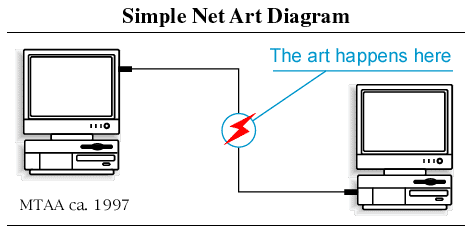
Simple Net Art Diagram by MTAA
The late 1990s also saw artists like Deidre LaCarte, who created the iconic “Hamster Dance” website in 1998, using GIFs to craft whimsical, engaging digital experiences. Although the original website no longer exists, several recreations and interpretations can now be found online.
Between 1998 and 2002, the digital art organization Rhizome commissioned artists to produce splash pages for its website, further cementing the GIF’s role as a tool for artistic experimentation.
Net artists such as Olia Lialina, also known as GIFmodel, distributed GIFs of herself online. Tom Moody, famous for his OpArt-inspired GIFs, and Cory Arcangel, whose work included “Super Mario Clouds,” built their reputations through this medium.
GIFs: Survival and revival #
In the early 2000s, the GIF format faced new challenges with the rise of Flash animation and new video-sharing tools. However, the patent license for GIFs expired in 2004, and the increasing use of social media and smartphones led to a resurgence in their use.
GIFs have become ubiquitous in online communication in the past two decades, serving as a go-to medium for expressing emotions, humor, and commentary. Platforms like GIPHY, which reaches over 1 billion daily users, have further solidified the GIF’s place in internet culture.
GIFs in the art world #
While GIFs may not have received the same institutional recognition as other digital mediums, their impact on the art world is undeniable. In 2006, Rhizome organized a GIF show in San Francisco, curated by Marisa Olson, featuring artists like Cory Arcangel, Tom Moody, and Olia Lialina. This marked one of the first and most significant exhibitions dedicated to the GIF as an art form. 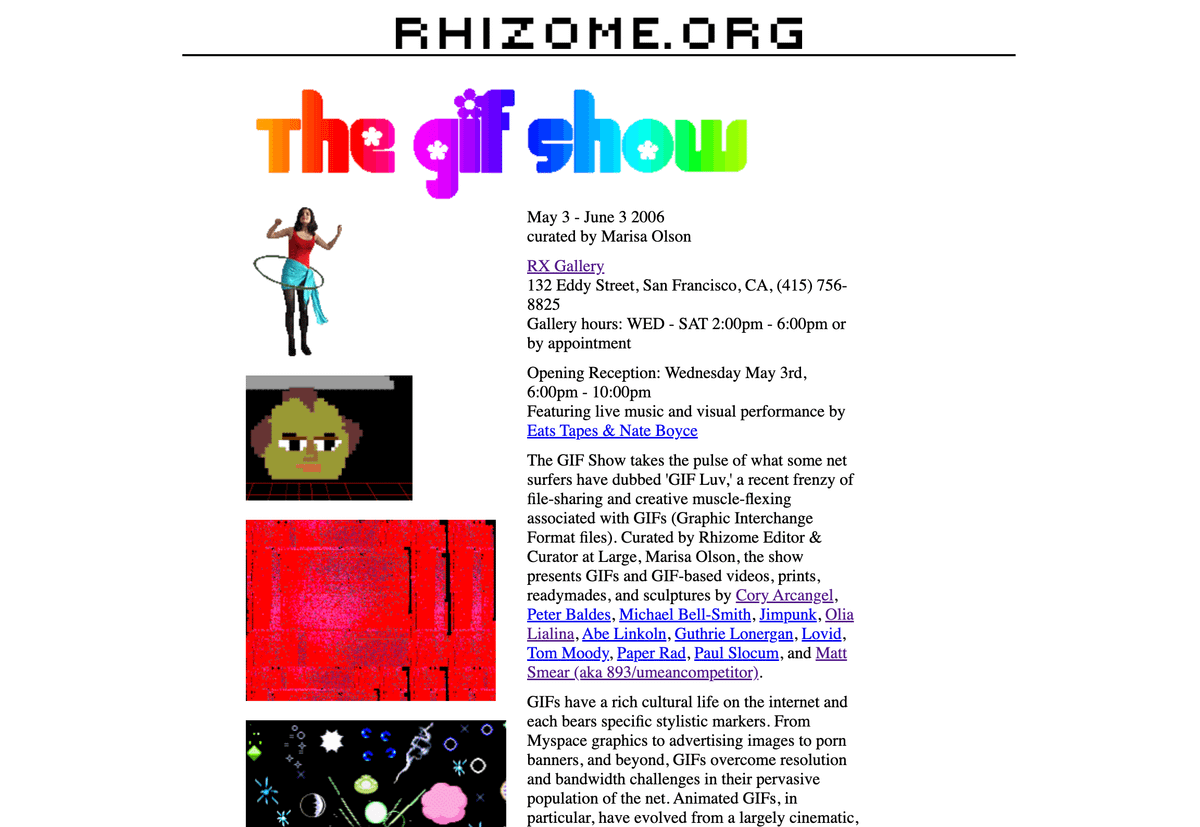
In 2013, Lorna Mills exhibited GIFs at the Art Gallery of Ontario during their David Bowie exhibition and continued elevating the format in 2017, when she took over the Whitney Museum’s website as part of its Sunrise/Sunset commissions.
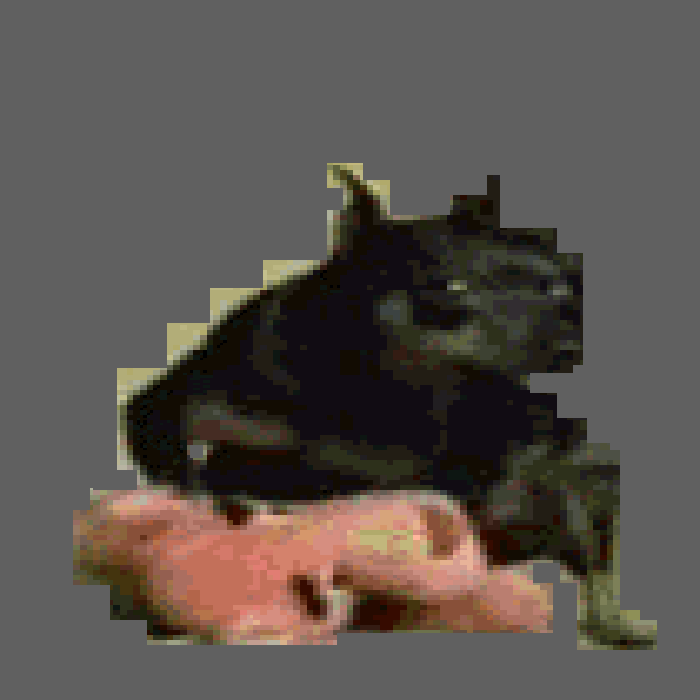
Ima Cowboy Lover Yes I Am by Lorna Mills. View on objkt.
More recently, the Museum of Moving Image NYC exhibition “Refreshing the Loop” (2023-2024), curated by Regina Harsanyi, featured works by contemporary GIF artists like Francoise Gamma and p1xelfool, showcasing the continued evolution of the medium.
GIFs on Tezos #
Tezos’ unique ecosystem for creators, coupled with the rise of NFTs, has introduced a new chapter in the history of GIF art. Artists who have been experimenting with GIFs since the early 2000s, such as Nicolas Sassoon, Elna Frederick, and Sara Ludy, are now recognized names in the Web3 art space.
The fusion of GIFs with blockchain technology has created new opportunities for artists to distribute, monetize, and gain recognition. With projects like GifGallery and objkt providing a marketplace for over 300,000 GIFs, the medium continues to flourish as a digital form of expression.

Window Still Life 001 by jjjjjohn. View on objkt.
As we look to the future, it’s clear that the GIF—far from being a relic of the past—remains a powerful tool for creativity and communication in the digital age. For example, this November, Objkt One will present the iconic artist Lorna Mills, who works with GIFs, at the historic Paris Photo art fair at the Grand Palais in Paris.
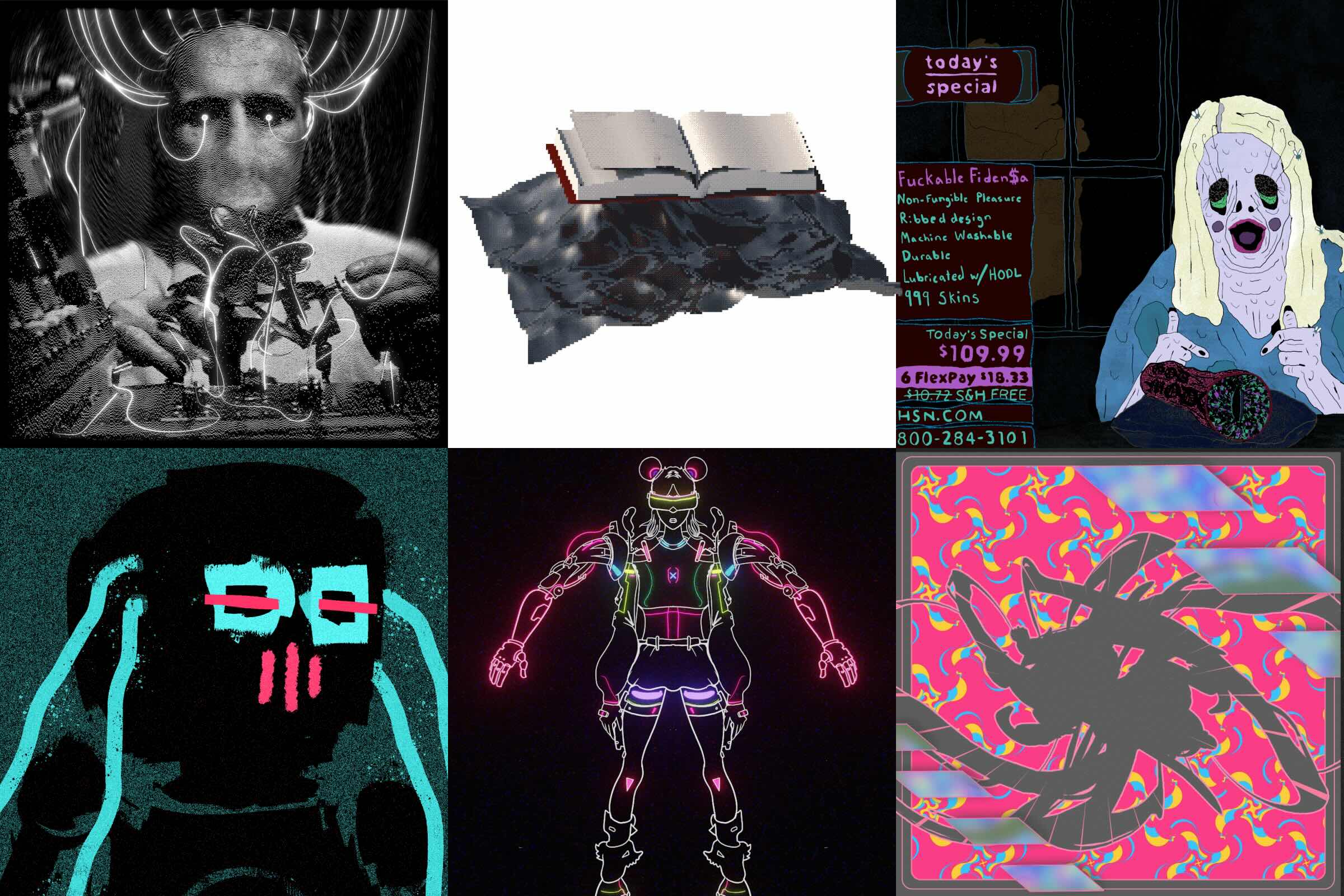
Artists featured from left to right: Top row - A.L. Crego, Spøgelsesmaskinen, Diewiththemostlikes & Xer0x. Bottom row - XCOPY, Sutu, neurocolour
The Tezos community celebrates National GIF Day #
As we celebrate National GIF Day, the Tezos ecosystem proudly honors the GIF’s 37-year evolution. With the rise of NFTs and blockchain, especially within Tezos, the GIF continues to inspire creativity and shape digital culture worldwide.